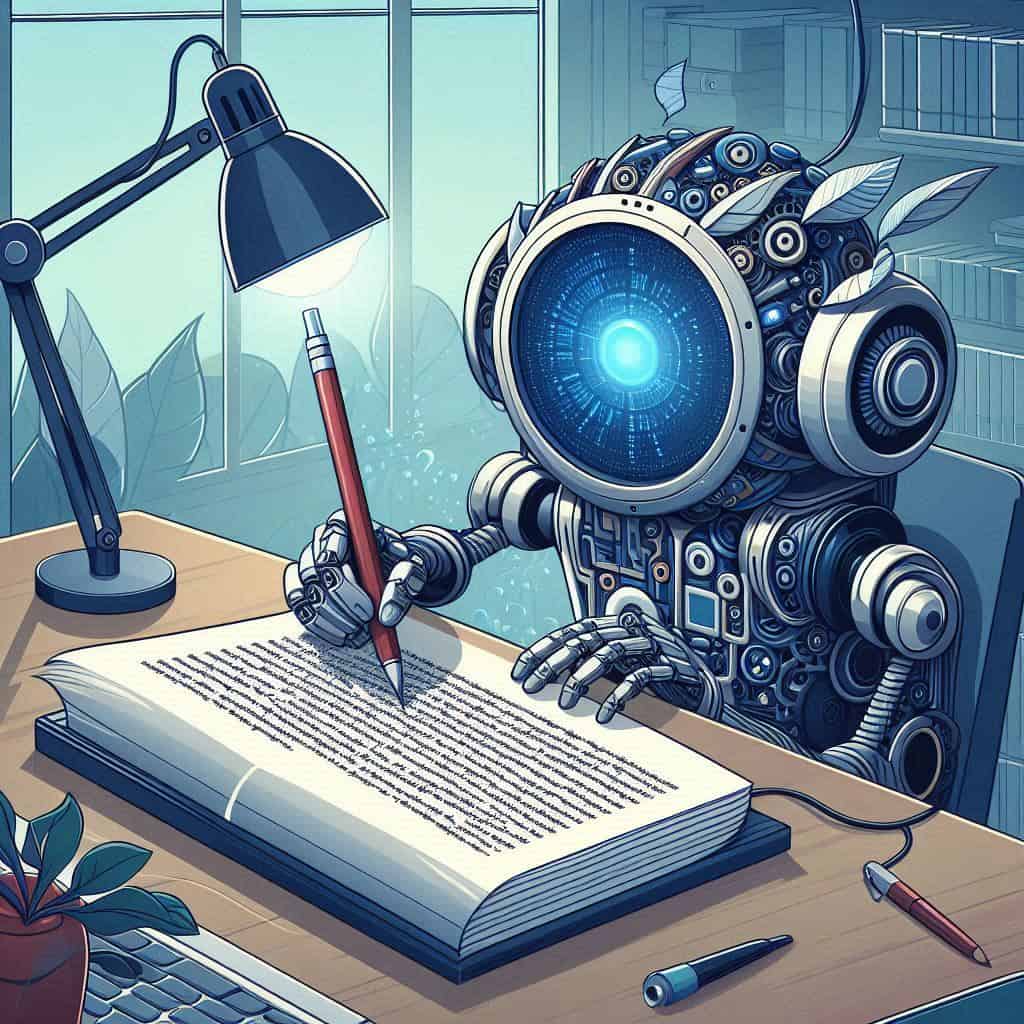
Unveiling the Mystery: A Deep Dive into AI Mystery Scenario Generators
- Genre-Specific AI Writing

Introduction to AI Mystery Scenario Generators
Have you ever dreamed of writing a captivating mystery but struggled to come up with a compelling plot? Well, now you can harness the power of artificial intelligence to become the next Agatha Christie! AI mystery scenario generators use advanced algorithms to help you create unique and suspenseful stories, complete with intriguing characters, clever twists, and clues to keep your readers guessing until the very end.
Unveiling the Mystery: A Deep Dive into AI Mystery Scenario Generators
The allure of a good mystery is undeniable. The thrill of unraveling clues, the suspense of chasing red herrings, and the satisfaction of unmasking the culprit – these are the elements that keep us hooked. But crafting a compelling mystery narrative, with its intricate plots and captivating characters, can be a daunting task. This is where the power of AI mystery scenario generators comes into play. These innovative tools are revolutionizing the way we approach mystery writing, providing a springboard for creativity and a helping hand for writers of all levels.
Inside the Enigma: Decoding How AI Mystery Scenario Generators Work
Imagine having a virtual storyteller, trained on thousands of mystery classics, ready to spin a new tale just for you. That’s the essence of an AI mystery scenario generator. These tools leverage the power of artificial intelligence to craft unique and engaging mystery plots, drawing from user inputs and a vast database of existing stories.
The Process of Creating a Mystery Plot
The process typically begins with the user providing key details that shape the narrative:
- Setting: The backdrop of your mystery, whether it’s a “foggy, isolated island village” or a “bustling city” brimming with secrets, sets the tone and influences character actions.
- Character Descriptions: Brief sketches of your main players, like “a seasoned detective nearing retirement” or “a young, over-eager journalist,” establish their roles and investigative styles.
- Mystery/Crime: The heart of the story, such as “a local fisherman goes missing without a trace” or “the mayor is found dead in his office,” defines the central conflict and the investigative path.
- Twist: The element of surprise that elevates a good mystery to a great one. Twists like a “missing fisherman faking his disappearance” or “the detective’s own partner being involved” introduce unexpected turns and force a reevaluation of the evidence.
How AI Processes Your Inputs
Once the user feeds these inputs, the AI engine gets to work, processing the information through a series of intricate systems:
- Natural Language Processing (NLP): This technology allows the AI to understand and interpret the user’s input, deciphering the nuances of language and extracting key themes.
- Machine Learning (ML): By analyzing a vast library of existing mystery stories and plots, the AI identifies patterns, learns successful storytelling techniques, and recognizes what makes a good mystery.
- Generative AI: This is where the real magic happens. The AI, equipped with the knowledge gained from user input and past data, weaves together a fresh and cohesive plot, complete with believable characters, intriguing twists, and strategically placed clues and red herrings.
The Output of AI Mystery Generators
The output generated by these AI storytellers typically includes:
- Fully Fleshed-Out Characters: Each with unique motivations, personalities, and relationships that drive the plot forward.
- Intriguing Plot Developments: Key events, twists, and turns designed to keep the story engaging and unpredictable.
- Clues and Red Herrings: The essential breadcrumbs that guide the investigation, with carefully planted clues to lead towards the solution and red herrings to throw the characters (and the audience) off the scent.
Beyond the Basics: Exploring Different Types of AI Mystery Scenario Generators
While the core functionality of AI mystery scenario generators remains consistent, there’s potential for specialization within the genre. Imagine tools specifically designed for crafting locked-room mysteries, where the crime seemingly defies all logic, or noir generators that immerse users in the gritty underbelly of urban crime. While specific examples require further research, the possibility of AI catering to nuanced subgenres within mystery writing is an exciting prospect.
Mastering the Craft: How to Use an AI Mystery Scenario Generator Effectively
AI mystery scenario generators are powerful tools, but they are most effective when used strategically. Here’s a step-by-step guide to help you make the most of these AI storytellers:
- Brainstorm and Refine Your Ideas: Before you even engage with the generator, take some time to define your core concept. What kind of mystery do you envision? Who is your protagonist? What is the central conflict?
- Feed the AI with Detailed Inputs: The more specific your inputs, the more tailored and relevant the generated output will be. Provide clear descriptions of your setting, characters, the crime, and any desired twists.
- View the Generated Output as a Foundation: The AI’s output is not a finished product but a springboard for your creativity. Use the generated elements as building blocks and add your personal touches, expand on character arcs, and refine the plot to align with your vision.
The Business of Mystery: Commercial Applications of AI-Generated Scenarios
AI-generated mystery scenarios have exciting applications beyond personal writing projects. They can be used commercially in various ways:
- Novels and Short Stories: Writers can leverage AI-generated scenarios as a starting point for full-fledged stories, expanding on the provided elements and weaving in their unique style and voice.
- Role-Playing Game Plots: Game masters can utilize AI tools to generate complex and engaging plots for their campaigns, ensuring a steady stream of fresh ideas and unexpected twists.
- Interactive Fiction: AI-generated scenarios can be adapted into interactive fiction, where readers make choices that influence the story’s direction.
- Content Marketing and Entertainment: Brands and entertainment platforms can use AI to create mystery-themed content for marketing campaigns, online games, or interactive experiences.
However, it’s crucial to be mindful of legal considerations when using AI-generated content for commercial purposes. Copyright issues and attribution of AI assistance are areas that require careful attention and potentially external research.
Acknowledging the Boundaries: Limitations of AI Mystery Scenario Generators
While AI mystery scenario generators offer a wealth of possibilities, it’s essential to recognize their limitations:
- Human Creativity Remains Supreme: AI, for all its advancements, cannot fully replicate the depth of human creativity and intuition. The most compelling stories still require the writer’s touch to infuse them with emotion, originality, and unique perspectives.
- Potential for Formulaic Plots: If not used creatively, AI generators can fall into patterns, producing repetitive or formulaic plots.
- The Importance of Human Refinement: AI-generated scenarios benefit significantly from human editing and refinement. A skilled writer can elevate a basic AI-generated plot into a truly captivating narrative.
Conclusion: Embracing the Future of Mystery Writing with AI
AI mystery scenario generators are powerful tools that can empower writers, spark creativity, and streamline the storytelling process. While they have limitations, their potential to revolutionize the way we approach mystery writing is undeniable. By understanding how these tools work, using them effectively, and acknowledging their boundaries, writers and storytellers can unlock a new realm of possibilities, crafting captivating mysteries that enthrall and engage audiences.
Frequently Asked Questions about AI Mystery Scenario Generators
What is an AI mystery scenario generator?
An AI mystery scenario generator is a digital tool that uses artificial intelligence to create unique story ideas, plots, and even full narratives for mystery stories. Think of it as a brainstorming partner who can help you come up with fresh ideas and craft suspenseful tales.
How does an AI mystery scenario generator work?
AI mystery scenario generators use a combination of Natural Language Processing (NLP) and Machine Learning (ML) techniques:
- You provide some basic information about the setting, characters, crime, and any desired plot twists.
- The AI uses NLP to understand what you’ve written and extract key themes and concepts.
- Then, the AI taps into a massive database of existing mystery stories and plots, using ML to analyze patterns and learn what makes a good mystery.
- Finally, the AI uses all this information to generate a unique
Share:

